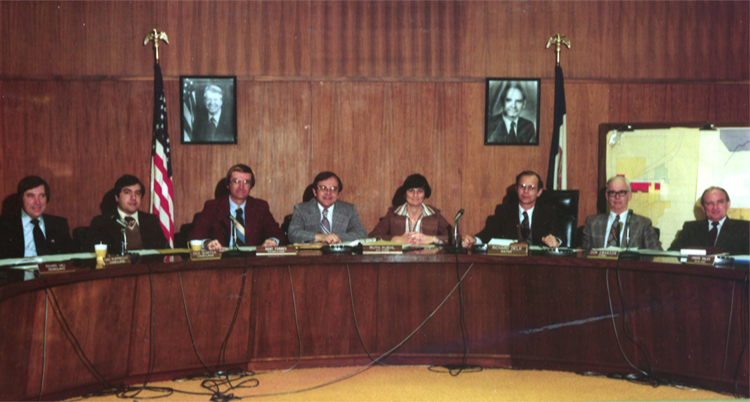The whole event was reported in the newspapers. At a subsequent council meeting, Thurman’s resignation was accepted. The holding of closed and special meetings was discussed. The council and audience reached an agreement on better publicizing meeting times and sites. The whole issue propelled Thurman into a council seat at the next election.
With Thurman's resignation, a new clerk had to be hired. There was some talk of hiring a city administrator instead of a clerk. However, it was felt that the citizens should have a chance to decide the issue. The question was not brought up again. Don A. Henry was hired as town clerk. He was clerk until September 4, 1975. Ruth Kuehl was hired the next November to replace Henry.
The town became a city in 1975. The Iowa legislature had passed a law in 1973 that officially designated all incorporated towns as cities. In accordance with the new law on July 22, 1975 the council changed the town’s name to the City of Pleasant Hill.

The Digester Debacle
Another incident of the mid- seventies was the "digester." As part of its effort to attract business to the community, the council agreed to lease some land next to the sewage plant. The people leasing the land were going to build a machine called the digester. Its purpose was to take garbage (from which metal and glass had been removed) and sewage sludge and process them into fertilizer. The idea had come from an experimental model in Texas. It sounded like a good ecological move.
Unfortunately for the builders, a couple of major details had been forgotten. The experimental model had
A major problem developed by 1975 with the town's expansion east of Shadyview Boulevard. Since that was the highest point of the town, pumps bringing water in from Des Mines were not able to supply enough pressure. The city council asked for a bond issue in 1975 to build a water tower on the east side of town.
The bond issue passed, but it was discovered that the sample ballots had been published incorrectly. In order to get the bond vote validated, the city had to ask the state legislature to make it legal. Since 79% of the people wanted the water tower, there was no problem with the legislature.